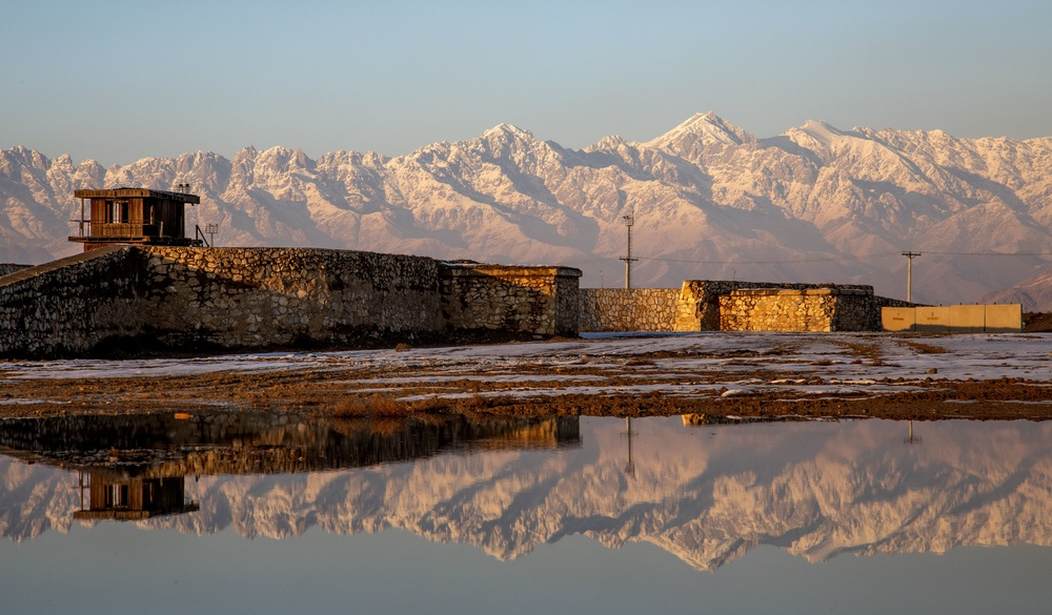Gen. George Custer was in such a hurry to catch Sitting Bull and the Sioux warriors that he ignored orders to wait for reinforcements and instead charged headlong into an attack that ultimately led to his death and that of every one of his men at the Battle of the Little Big Horn.
Gen. Robert E. Lee massed nine Confederate brigades to charge into the center of the Union line in the doomed Pickett’s Charge on the third day at the Battle of Gettysburg.
Lee had too much confidence in his troops, failed to commit enough of them to the action to have a realistic chance of success, and sent them across a wide-open field that turned into an extended shooting gallery for Union soldiers and artillery. The Confederacy never recovered.
Add now to the list of men responsible for the worst military blunders in American history President Joe Biden’s decisions to abandon Bagram Air Base in Afghanistan and to commence the U.S. withdrawal during the fighting season for that perpetually war-ravaged region of Central Asia.
The Bagram abandonment — done in the dead of night without forewarning to the Afghan national government that we supported and without the prior removal of valuable equipment — is so obvious and colossal a blunder as to defy rational explanation.
Biden claimed Thursday that he asked his military advisers — primarily the Joint Chiefs of Staff and the Secretary of Defense — about the advisability of pulling out of Bagram and they told him not to worry.
Related: SHAME: Biden Likely to Leave Thousands of Americans Behind in Afghanistan
If that is true — and I pray to God that Biden was either lying to cover his posterior or simply misunderstood what they said — then every one of those men should be fired from their posts and discharged from the U.S. military. Here’s why:
Bagram was the largest U.S. base in Central Asia, a veritable nuclear carrier of U.S. power in the middle of a sea of adversaries, including Russia, China, and Iran. With Bagram intact, the U.S. could have credibly threatened the Taliban with massive precision air bombardment that would have slowed or stopped the terrorists’ drive to Kabul.
Those same air capabilities would also have continued to be available to support the Afghan National Army that absolutely depended upon U.S. air cover to have a fighting chance against the Taliban. At the very least, the Taliban would not now control Kabul and there would be no humiliating August 31 “red line” for the U.S. to complete its withdrawal.
And think about this: Keeping Bagram throughout the withdrawal, however long it took, would have preserved U.S. intelligence capabilities that would have aided keeping the Taliban honest and preserving at least some tactical advantages for the Afghan army.
That Biden irresponsibly tossed those resources and capabilities away simply defies comprehension except in the context of either a tragic inability to comprehend the stakes involved or a panicky desire to get out of Dodge no matter the cost in U.S. and Afghan lives, or to American honor.
There is another side to the Biden Bagram blunder that could prove to be the most significant loss in the long run, and that is the thousands of Humvees, armored personnel carriers and other military vehicles, stacks and stacks of advanced U.S. firearms, support equipment and so much more at Bagram and supplied to the Afghan Army elsewhere in Afghanistan from 2003 to 2016.
There are also the dozens of heavy transport choppers, Black Hawk helicopters, and A-29 Super Tucano fixed-wing attack aircraft. Nobody expects the Taliban to immediately field these aircraft with pilots. They don’t have them, but you can be sure the Russians and Chinese are more than happy to provide the training and perhaps even supply their own nationals at the controls.
Related: Joe Biden Is Now the World’s Top Arms Supplier to Terrorists
By leaving so much sophisticated U.S. military equipment behind, Biden has given the Taliban the opportunity to become a far more formidable force than it ever could have previously imagined.
Yes, keeping Bagram would have required a larger U.S. military presence, at least temporarily, and it would have put U.S. forces in a confined area subject to incessant ground, rocket and artillery attacks that could be extremely costly in a siege situation.
But when one side’s forces are concentrated in such a manner, the attacking forces must also concentrate, and that makes them sitting ducks for U.S. targeting and air power. Keeping Bagram would not have been a Khe Sanh situation because the Taliban lacks the massive manpower and other resources that were available to the North Vietnamese.
And finally, the context for Biden’s Bagram Blunder was fixed by his decision to withdraw during the fighting season, a time for which the Taliban had prepared and planned. The timing could not have been worse for the U.S. or the Afghan army.
Military strategists argue endlessly about the lessons of this battle and that decision. Cannae and Carrhae, Napoleon in the dead of the Russian winter, the Charge of the Light Brigade at Balaclava. What they won’t be debating is that Biden’s Bagram Blunder deserves to be near the top of the list.










Join the conversation as a VIP Member